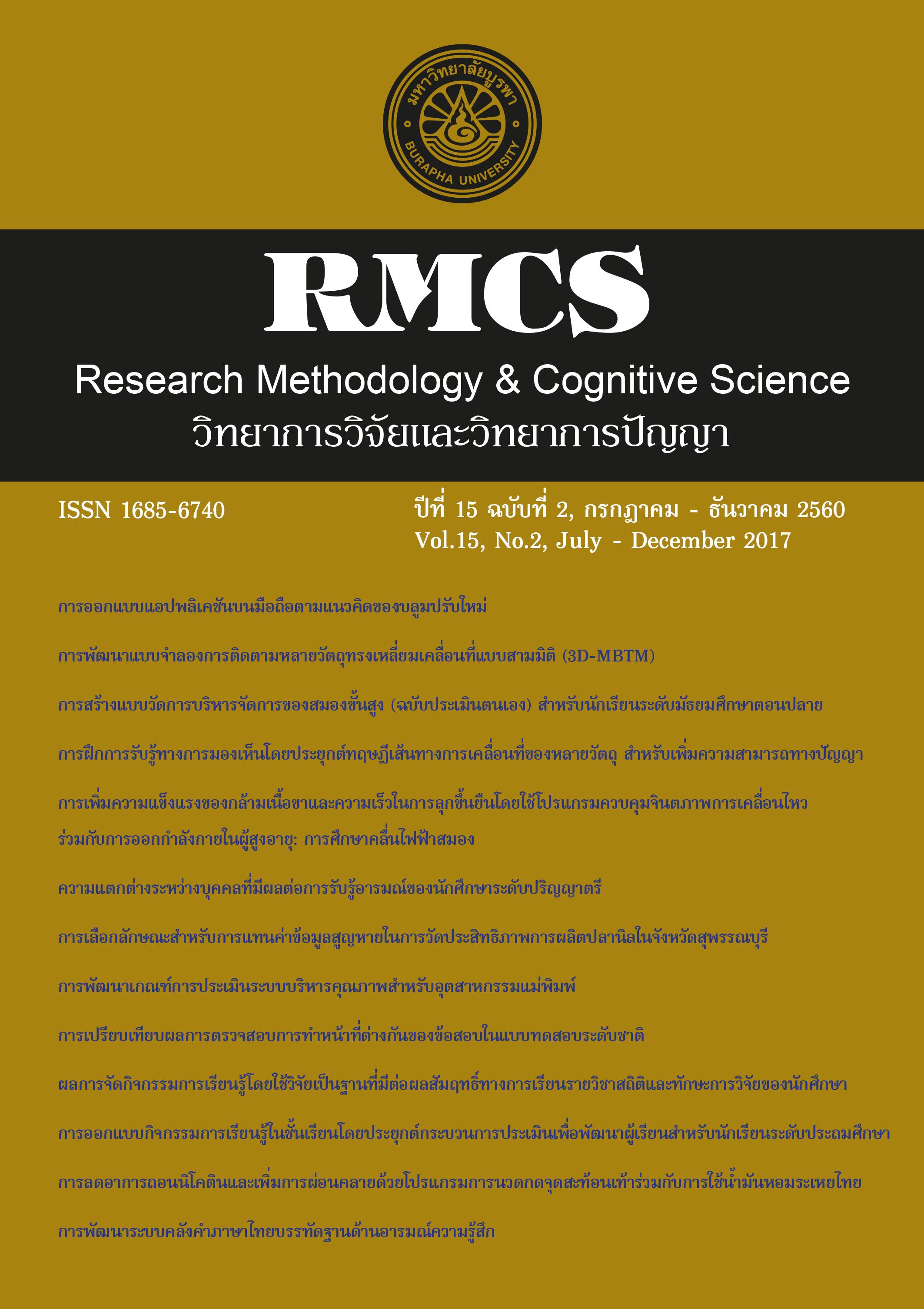Mobile Applications Design Based on Bloom's Revised Taxonomy
Main Article Content
Abstract
Mobile applications have played an enormous role in educational perspective nowadays as a tool for both teaching and learning. By integrating Bloom's Revised Taxonomy with the use of mobile applications in the classroom, it promotes greater expression of learning behavior. To achieve the learning objectives , mobile application design is the most important, because it is considered as the beginning of the learning processes. It determines the relationship between users and mobile applications, which can interact with each other. Besides, it indicates guidelines for measuring and evaluating both the promotion of knowledge and attitudes. Therefore, a well design of mobile applications can result in better outcomes in student development. It is a great success in bringing mobile applications to education. In addition, an aggregation of interesting issues in designing of mobile applications based on Bloom's Revised Taxonomy is also a guideline for further research in the future.
Article Details
References
Barr, M. (2017). Video games can develop graduate skills in higher education students: A randomised trial. Computers & Education, 113, 86-97.
Bloom, B. S., Engelhart, M. D., Furst, E. J., Hill, W. H., & Krathwohl, D. R. (1956). Taxonomy of educational objectives: Cognitive domain. New York: McKay.
Cheong, C., Bruno, V., & Cheong, F. (2012). Designing a mobile-app-based collaborative learning system. Journal of Information Technology Education, 11(1), 94-119.
Chuang, Y. T. (2015). SSCLS: A smartphone-supported collaborative learning system. Telematics and Informatics, 32(3), 463-474.
Chuang, Y. T. (2017). MEMIS: A mobile-supported english-medium instruction system. Telematics and Informatics, 34(2), 640-656.
Echeverría, A., García-Campo, C., Nussbaum, M., Gil, F., Villalta, M., Améstica, M., & Echeverría, S. (2011). A framework for the design and integration of collaborative classroom games. Computers & Education, 57(1), 1127-1136.
Fulantelli, G., Taibi, D., & Arrigo, M. (2015). A framework to support educational decision making in mobile learning. Computers in Human Behavior, 47, 50-59.
Genc-Nayebi, N., & Abran, A. (2017). A systematic literature review: Opinion mining studies from mobile app store user reviews. Journal of Systems and Software, 125, 207-219.
Hwang, G. J., & Wu, P. H. (2014). Applications, impacts and trends of mobile technology-enhanced learning: a review of 2008e2012 publications in selected SSCI journals. International Journal of Mobile Learning and Organization, 8(2), 83-95.
Jeno, L. M., Grytnes, J. A., & Vandvik, V. (2017). The effect of a mobile-application tool on biology students' motivation and achievement in species identification: A Self-Determination Theory perspective. Computers & Education, 107, 1-12.
Lin, P. C., Hou, H. T., Wang, S. M., & Chang, K. E. (2013). Analyzing knowledge dimensions and cognitive process of a project-based online discussion instructional activity using Facebook in an adult and continuing education course. Computers & Education, 60(1), 110-121.
Luck, S. J. (2014). An Introduction to the event-related potential technique. London: MIT Press.
Minović, M., Milovanović, M., Šošević, U., & González, M. Á. C. (2015). Visualisation of student learning model in serious games. Computers in Human Behavior, 47, 98-107.
Petri, G., & von Wangenheim, C. G. (2017). How games for computing education are evaluated? A systematic literature review. Computers & Education, 107, 68-90.
Reychav, I., Ndicu, M., & Wu, D. (2016). Leveraging social networks in the adoption of mobile technologies for collaboration. Computers in Human Behavior, 58, 443-453.
Reychav, I., & Wu, D. (2015). Are your users actively involved? A cognitive absorption perspective in mobile training. Computers in Human Behavior, 44, 335-346.
Reychav, I., & Wu, D. (2016). The interplay between cognitive task complexity and user interaction in mobile collaborative training. Computers in Human Behavior, 62, 333-345.
Sun, J. C. Y. (2014). Influence of polling technologies on student engagement: An analysis of student motivation, academic performance, and brainwave data. Computers & Education, 72, 80-89.
Zydney, J. M., & Warner, Z. (2016). Mobile apps for science learning: Review of research. Computers & Education, 94, 1-17.
